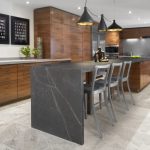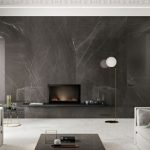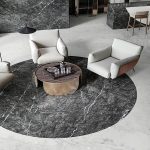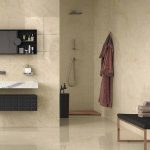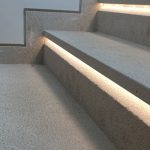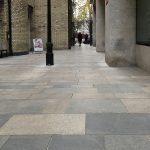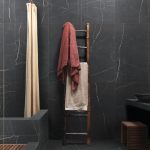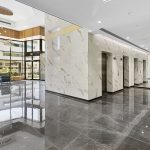Managing Marble Deterioration
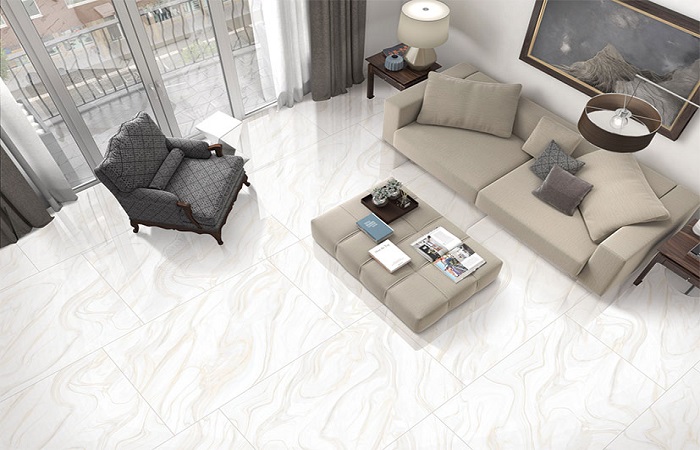
Managing Marble Deterioration
Managing marble deterioration is the core of the present text. Employing state-of-the-art construction methods and inventive design strategies, these contemporary facades seek to restore marble to its former glory.
Deterioration of Marble
Marble is a metamorphism of limestone as a result of pressure and heat in the earth crust due to geological processes. It has numerous applications as building material, in monuments, for structural and decorative purposes. Marble can deteriorate by different causes. Physical, chemical and biological factors are all considered deteriorating factors. One of the main causes of deterioration of archeological rocks is the microbial action, or bio-deterioration. Stones of art works can be colonized by different groups of microorganisms, i.e. bacteria, cyanobacteria, algae and fungi.
Marble in Ancient History
Timeless, enduring, and stately, marble has been used since ancient Greece and Rome. Marble was used for the most important buildings of civilized society, from temples to bath houses to markets. The expense of quarrying and transporting the stone often constituted the bulk of construction costs. The costs were along with the workmanship of shaping and securing the heavy blocks. As the cost of labor increased, use of marble came to be reserved for the most socially significant buildings. With technological advances in the last half-century, marble became available not only as traditional dimension stone, but as thin panel cladding.
Material Properties and History
Marble is a metamorphic rock that derives from the transformation of limestone and other sedimentary carbonate rocks under high heat and pressure. Unlike slate or mica, in which differential stress creates planes of cleavage, marble is non-foliated, which permits its widespread use in sculpture and construction.
Hundreds of different types of marble are found throughout the world. Characteristic veins and gradations in color result from impurities in the limestone, which move and re-crystallize as the stone metamorphoses into marble. In commercial applications, the term marble may refer to a number of geologic formulations, including true calcite and dolomite marbles, as well as travertine, serpentine, and hard limestone.
Marble Tumultuous History
From the monumental ruins of antiquity to the lavish master baths of today, marble has had a rich and tumultuous history. Once the premier material in the architect’s palette, the difficulties of building with this luxurious stone and the development of cheaper alternatives have led to a steady decline in its use as a facade treatment.
Most Emblematic Architects Passion for Marble
Three of the most emblematic architects of the 20th Century, Adolf Loos, Mies van der Rohe and Philip Johnson share not only their stylistic tastes and minimalist aesthetic, but also their passion for marble. But who says you can’t teach an old dog new tricks? Employing state-of-the-art construction methods and inventive design strategies, these contemporary facades seek to restore marble to its former glory.
Marble Advantages
What makes marble a firm candidate with respect to other construction materials? Let’s see it.
High Strength
Because it is a metamorphic rock, mainly formed of limestone rocks, which gives it excellent heat resistance.
Singular Material
Nature was responsible for forming it over time, which means each piece will possess a different particularity to another piece. A wide variety in colors and textures, which assist when creating or designing projects.
Timeless
The passage of time does not leave its mark on it, thus it maintains its natural aspect. If we compare it with other materials, we will see that marbles are longer-lasting.
Various Uses
It offers multiple possibilities in both decoration and construction. Its use extends to both interiors and exteriors. Available in a wide range of colors as well as polychrome inlaid with other minerals, it is appreciated because of its strength, durability and luxurious aesthetics.
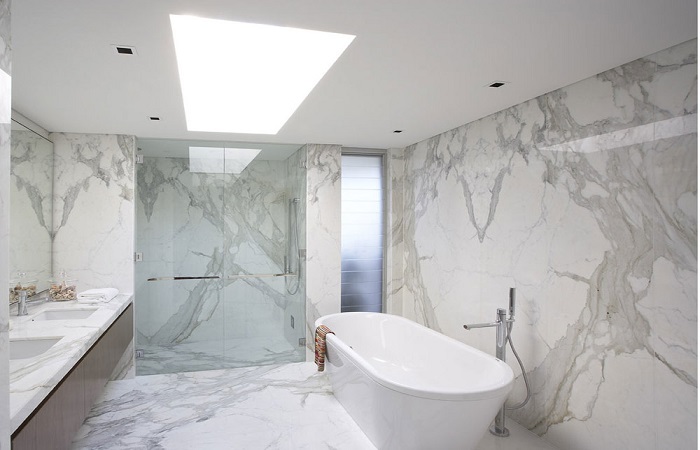
Tolerance in Stone
The manufacturing tolerance on the thickness and face dimensions of stones is set out in BS 8298: 2000 and confirms to the European Standard BSEN 1469.
a) Units 50mm thick or less: the length and height dimensions should not vary from those specified by more than ± 2mm.
b) Units over 50mm thick: the length and height dimensions should not vary from those specified by more than ± 3mm in 900mm.
Design of Fixing Systems
The objective is to achieve safe and reliable fixing of the cladding and full consideration at an early stage of the design work is essential. Fixings must be capable of three-dimensional adjustment to accommodate construction tolerances.
Dead Loads (Permanent)
The actual weight of the supported stonework, which can be conservatively assessed using a density of 3 tones per cubic meter. In some cases the stone may be offset from the centre of support and the dead load will then act eccentrically on the fixings.
Applied Loads (Transient)
Caused by wind pressure and section, window cleaning equipment, thermal and structural movements, etc. These loads will need to be assessed by a Structural Engineer.
Details of Fixing Types
Fixings must be produced from stainless steel or non-ferrous metal, must be of sufficient size and strength to resist the relevant forces and must be readily available to meet the construction program. Marble, sealant, concrete and steel respond differently to changes in temperature, wind pressure, and seismic forces. Unless facade design anticipates and responds to these varying degrees of change, the wall system will fail under the stress of restricted movement.
Improving Differential Movement Tolerance
To improve tolerance for this differential movement, a bond breaker, usually a polyethylene sheet or foam pad, may be installed between marble panels and concrete back-up. Likewise, accommodate movement at anchor points by drilling kerfs and holes slightly larger than the anchor. In the past, this anchorage space was often filled with epoxy to maintain water-tightness. However, epoxies restrict shear movement, which can cause the marble to crack. Instead, opt for rubber grommets or flexible sealants that balance the need for water protection with the requirement for movement tolerance.
Moisture Intrusion
Hysteresis increases the porosity of marble, permitting additional moisture to enter the panel. Therefore, Damage to the marble from freeze or thaw cycling, salts, acid rain, and pollutants occurs from the inside out, not just at the surface. Joint treatments are particularly critical in preventing moisture intrusion behind the panels, which can lead to heaving, displacement, and cracking. Water can also cause anchors to corrode.
Not only does this compromise the strength of panel supports, the expansive forces of the deteriorating metal can crack the stone, creating further moisture entry points and accelerating the cycle of deterioration. Controlling moisture egress through the appropriate use of flashings and weep holes, which channel wind driven rain and condensation out of the wall system, are integral to the durability of the facade.
Deterioration and Surface Erosion
Rain water and rapid temperature changes can cause detail deterioration and surface erosion. As the surface of the marble deteriorates, bonds between mineral particles in the marble weaken, and the stone’s flexural strength, or ability to resist loads without deformation, can become compromised.
When people think of marble buildings, images come to mind of the ancient world. However, the material is still being used today. They are used to create jaw-dropping works of contemporary architecture. And this is happening from Canada to India.
To learn more about us, click here.
Sources
medium.com/studiotmd/the-purity-and-architectural-beauty-of-marble-facades-777577cd736
https://www.sciencedirect.com/science/article/pii/S0570178312000292
- Back To Articles
- armani grey marble, armany grey, Deterioration of marble, fixing marble deterioration, fixing marble fecade, grey Armany, Managing Marble Deterioration, marble deterioration, Marble Deterioration and Surface Erosion, marble erosion, marble facade, marble surface erosion, natural stone Deterioration, Pietra Grey Marble, Pietra Grey Marble Tiles
Article
Natural Stone Applications
- 22 December 2022
Iranian Stones Introduction According to Source and Quarry
- 21 December 2022
Technical Stone Introduction and Quarrying Procedures
- 21 December 2022
Categories
- blog757
- news1
- Specialized articles756

